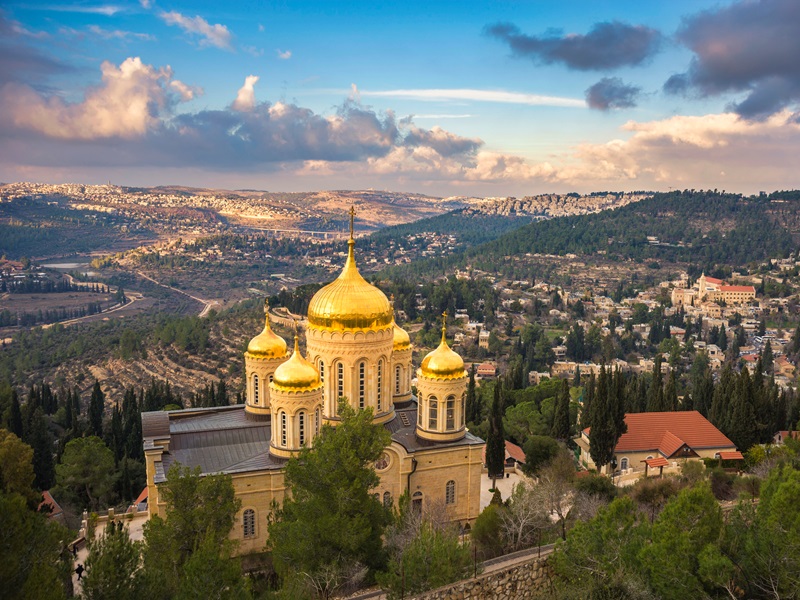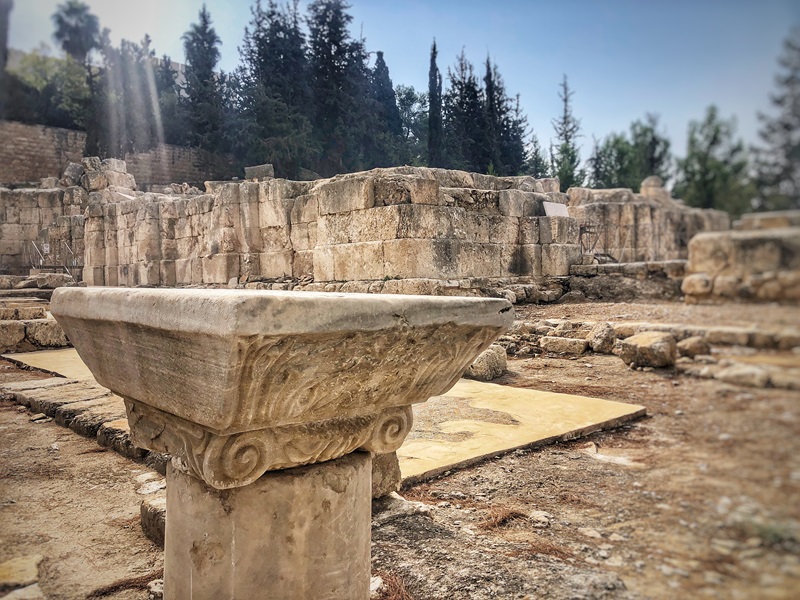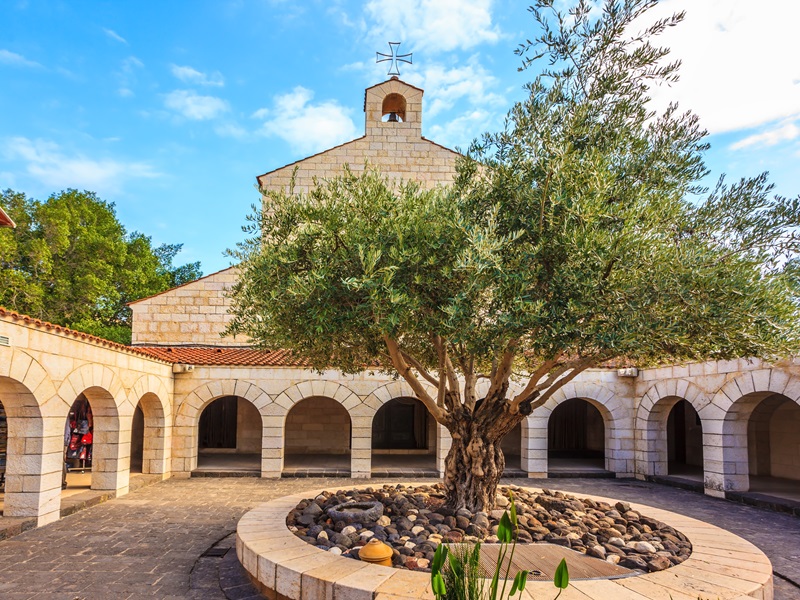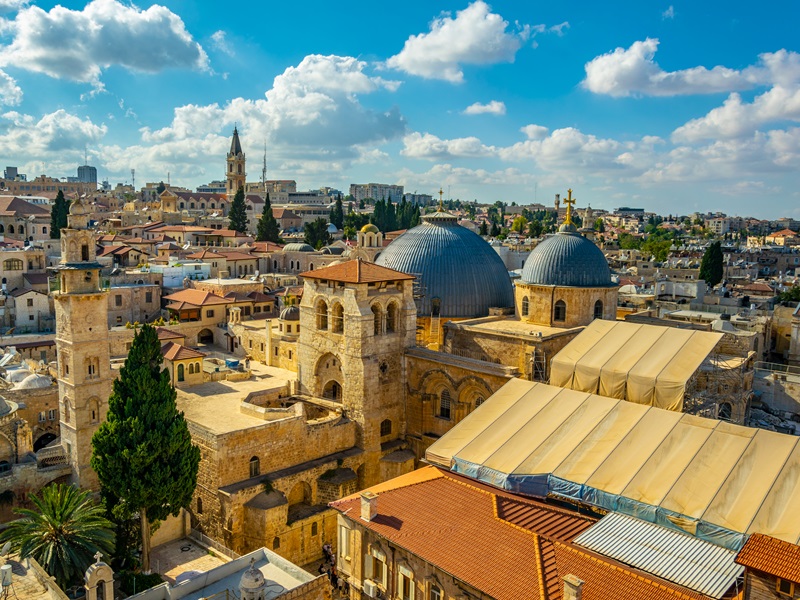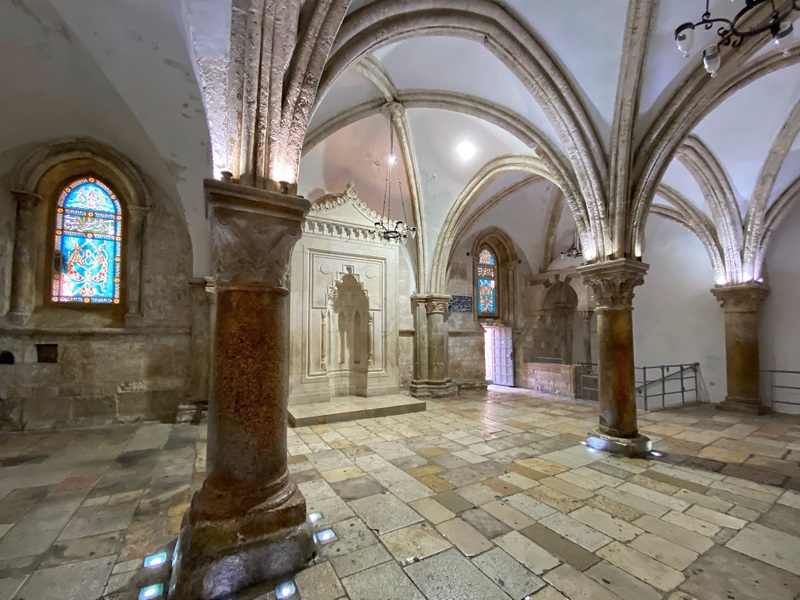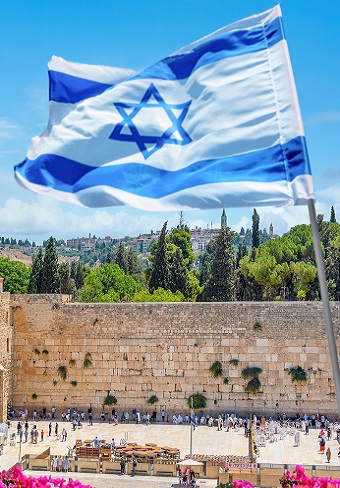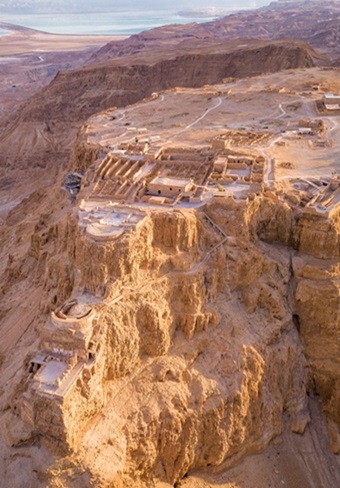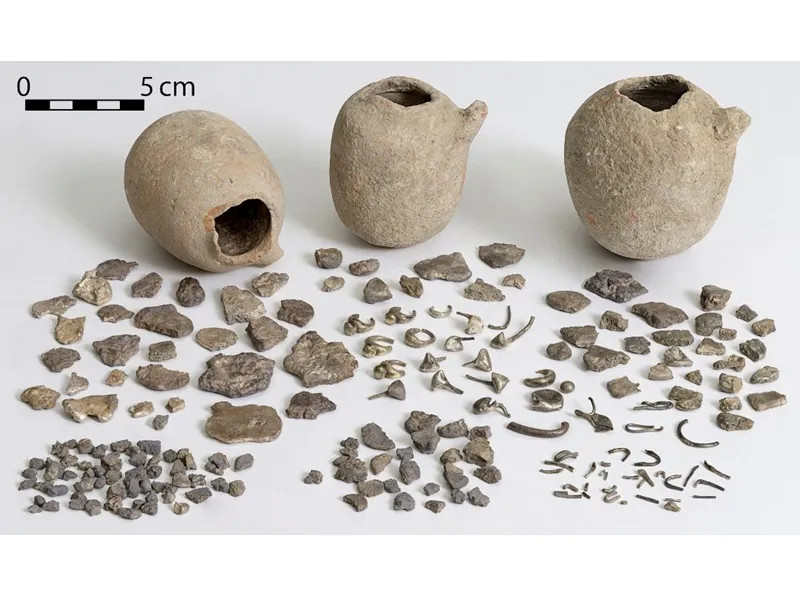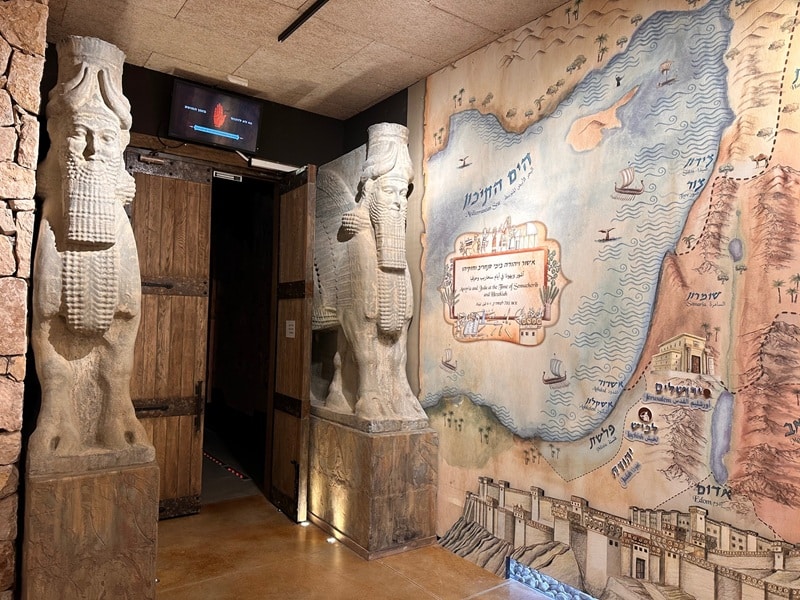Tracing the Sacred Path: How the Via Dolorosa Evolved
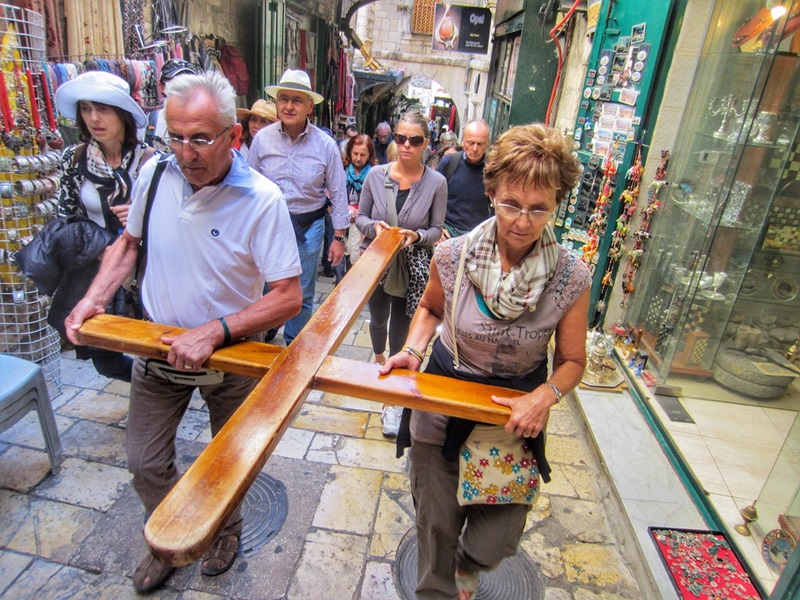
The Via Dolorosa, meaning the “Way of Suffering” or “The way of Grief” in Latin, is a path within Jerusalem’s Old City, traditionally believed to be the route that Jesus took from the place of his trial (the Praetorium) to the site of his crucifixion (the Golgotha). It is one of the most sacred and significant paths in Jerusalem and in Christendom.
Tracking, sanctifying, and following the path began in the Byzantine Period, but it gained prominence in Medieval times. The Byzantines identified the site of the trial of Jesus at Herod’s former palace, next to Jaffa Gate (The Kishle Excavations). However, the Crusaders favored a different location – the Antonia fortress, built at the northern end of the Temple Mount.
The Crusaders’ Route
The Crusaders were also the first to carry processions along this route. It began at the Antonia, continued through the Temple Mount, and ended at the Golgotha, inside the Church of the Holy Sepulchre.
Following the expulsion of the Crusaders, the Muslims forbade Christian processions through the Temple Mount. Being so, the Catholic church established an alternative route along the city streets, with 14 holy marks (“stations”), each marking a different event Jesus encountered.
The New Testament records only five events that Jesus encountered before his crucifixion. then half of the stations are, therefore, Catholic traditions and are not recorded in the New Testament. Moreover, over the centuries, some of the stations went through some slight changes.
These are the current stations, their location, and what each one represents:
First Station – The Trial of Jesus
 The First Station commemorates the trial of Jesus (Luke 23). It is marked at the Umryia Muslim boys’ school, which is at an elevated area at the northern end of the Temple Mount. The surface does not bear any remains from antiquity, but from one of its windows is one the best views of the Temple Mount and the Dome of the Rock.
The First Station commemorates the trial of Jesus (Luke 23). It is marked at the Umryia Muslim boys’ school, which is at an elevated area at the northern end of the Temple Mount. The surface does not bear any remains from antiquity, but from one of its windows is one the best views of the Temple Mount and the Dome of the Rock.
The Second Station
 The Second Station commemorates the condemnation of Jesus, his flagellation, and the imposition of the cross (Matthew 27:25, John 19:17). It is marked in two chapels within a Catholic compound opposite the Muslim boys’ school:
The Second Station commemorates the condemnation of Jesus, his flagellation, and the imposition of the cross (Matthew 27:25, John 19:17). It is marked in two chapels within a Catholic compound opposite the Muslim boys’ school:
 Church of the Flagellation – Restored in 1929 by A. Berluzzi, the chapel marks the condemnation and flagellation of Jesus. Its facade bears a relief of a crown of thorns to echo the outcome of the trial of Jesus. Inside three stained glass windows represent the scourging, the washing of the hands, and the release of Barabbas (Matthew 27:24-26).
Church of the Flagellation – Restored in 1929 by A. Berluzzi, the chapel marks the condemnation and flagellation of Jesus. Its facade bears a relief of a crown of thorns to echo the outcome of the trial of Jesus. Inside three stained glass windows represent the scourging, the washing of the hands, and the release of Barabbas (Matthew 27:24-26).
Church of the Condemnation and imposition of the Cross – Built in 1903-4, the second chapel commemorates the imposition of the Cross. Its floor bears a few large flagstones from Roman times. By local tradition, they are part of the Lithostrotos, the stone pavement where Jesus was introduced to the crowds at the end of his trial (John 19:13). On one of the stones a gameboard from Roman times can still be seen.
Another local tradition maintains that in the 4th century, Empress Helena found here the stairs on which Jesus walked out of the judgment hall. She commanded to pull out the stairs and send them to Rome, where they are kept to this day (Church of Scala Sancta).
Additional Points of Interest
Terra Sancta Museum – The second station compound also offers an audio-visual show projected over archaeological finds and a local Franciscan Archaeological Museum (Terra Sancta Museum).
Ecce Homo Arch – 30 meters west of the Second Station, above the street hovers part of a Roman triumphal arch. Known as the Ecce Homo Arch by local tradition, under this arch, Pilatus presented Jesus to the crowds at the end of his trial (John 19:5).
“Prison of Christ” – Next to the Ecce Homo arch is a Greek-Orthodox monastery, suggesting an alternative location for the Praetorium. The monastery bears a few caves. By local tradition Jesus was kept in one of the caves while waiting for his trial.
The Third Station – The First Fall of Jesus
At the corner of Via Dolorosa Street and Hagay Street, a few more large pavement stones from Roma Times can be seen. Next to them is a chapel marking the Third Station, the “Fall of Jesus from the weight of the Cross”. Since the 7th and the 9th stations mark a similar event, the 3rd station is also called “The First Fall of Jesus”. The falls of Jesus from the weight of the cross are not mentioned in the Gospels and are known only in Catholic tradition. The Armenian Catholic church maintains the chapel, but it was renovated by Polish soldiers stationed in the Holy Land during the Second World War. That is why Polish imagery appears in the Chapel’s ceiling.
The Fourth Station – Where Mary Saw Jesus
 The Fourth station is next to the 3rd station. It commemorates where Mary, the mother of Jesus, saw her son carrying the cross. This event is also known only in the Catholic church. The church commemorating the event is called the “church of Saint Mary of the Agony”. An ancient mosaic floor found in its basement bears an image of two sandals. By local tradition, it is a Byzantine period mark of where Mary stood, proof that the veneration of Mary at this location is centuries old. However, archaeological parallels suggest a less holy context. Images of sandals in a round frame embedded in ancient mosaic floors usually indicate where to take the sandals off before entering a bathhouse.
The Fourth station is next to the 3rd station. It commemorates where Mary, the mother of Jesus, saw her son carrying the cross. This event is also known only in the Catholic church. The church commemorating the event is called the “church of Saint Mary of the Agony”. An ancient mosaic floor found in its basement bears an image of two sandals. By local tradition, it is a Byzantine period mark of where Mary stood, proof that the veneration of Mary at this location is centuries old. However, archaeological parallels suggest a less holy context. Images of sandals in a round frame embedded in ancient mosaic floors usually indicate where to take the sandals off before entering a bathhouse.
The Fifth Station – Simon Helping Jesus to Carry the Cross
 The Fifth Station is at Hagay street’s junction and Via Dolorosa Street’s western stretch. The small chapel here marks where Simone of Cyrene helped Jesus carry the cross (Luke 23:26). There are no finds from the Roman period at the spot, but an indention in the Chapel’s wall is said to be formed after Jesus leaned against it.
The Fifth Station is at Hagay street’s junction and Via Dolorosa Street’s western stretch. The small chapel here marks where Simone of Cyrene helped Jesus carry the cross (Luke 23:26). There are no finds from the Roman period at the spot, but an indention in the Chapel’s wall is said to be formed after Jesus leaned against it.
The Sixth Station – Veronica’s Veil Site
 The Sixth Station is about 50 meters west of the 5th station. A small Roman pillar set in the wall along the street is the oldest mark of the spot. A Latin inscription engraved in it reads
The Sixth Station is about 50 meters west of the 5th station. A small Roman pillar set in the wall along the street is the oldest mark of the spot. A Latin inscription engraved in it reads
“6ST / PIA VERONICA FACIEM CHRISTI LINTEO DETERCI” –
6th station / [where] pious Veronica the face of Christ with a veil [she] wiped.
By Catholic tradition, the sixth station marks the home of a woman called Veronica. Seeing Jesus walking by, bleeding and sweating as he is carrying his cross, she came out and wiped his sweat off his face. This event too is not documented in the Gospels and is viewed as another Catholic tradition. Nevertheless, the supposed veil used by Veronica became a relic and was presented in Rome in Antiquity.
The Seventh Station – Jesus’ Second Fall
 The Seventh Station is at the T junction Beit-Habad Street and Via Dolorosa Street. The chapel here marks, by Catholic tradition, the second fall of Jesus from the weight of the cross. A large pillar still set on its base inside the chapel is said to mark the exact place of the fall, outside the city walls. Archaeologically, the pillar is a remnant of the western colonnade along Jerusalem’s main avenue in the late Roman period (the Cardo). By Catholic tradition here was the gate where authorities used to announce court sentances. A russian tradition maintains it was at the nearby Nevsky church.
The Seventh Station is at the T junction Beit-Habad Street and Via Dolorosa Street. The chapel here marks, by Catholic tradition, the second fall of Jesus from the weight of the cross. A large pillar still set on its base inside the chapel is said to mark the exact place of the fall, outside the city walls. Archaeologically, the pillar is a remnant of the western colonnade along Jerusalem’s main avenue in the late Roman period (the Cardo). By Catholic tradition here was the gate where authorities used to announce court sentances. A russian tradition maintains it was at the nearby Nevsky church.
The Eighth Station – Where the Women Cried for Jesus
 A small mark in the wall along Hannakah Street, 15 meters west of the 7th station, marks the Eighth Station. It bears a short Greek Inscription inscribed into a pillar’s base, reading “IC XC / NIKA” – Jesus Christ / Conquerer.
A small mark in the wall along Hannakah Street, 15 meters west of the 7th station, marks the Eighth Station. It bears a short Greek Inscription inscribed into a pillar’s base, reading “IC XC / NIKA” – Jesus Christ / Conquerer.
By local tradition, here the daughters of Jerusalem bewailed and lamented Jesus’ fate (Luke 23:27-31).
The Ninth Station – Jesus’ Third Fall
 A Roman pillar attached to the wall next to the Saint Anthony Coptic Orthodox church marks the Ninth Station. Here, by Catholic tradition, Jesus fell for the third time from the weight of the cross.
A Roman pillar attached to the wall next to the Saint Anthony Coptic Orthodox church marks the Ninth Station. Here, by Catholic tradition, Jesus fell for the third time from the weight of the cross.
The Tenth Station – Stripping the Garments
 On the right side of the main entrance to the Church of the Holy Sepulchre is another Roman pillar attached to a wall in front of a flight of stairs. This pillar marks The Tenth Station, where Jesus was stripped of his clothes (John 19:23).
On the right side of the main entrance to the Church of the Holy Sepulchre is another Roman pillar attached to a wall in front of a flight of stairs. This pillar marks The Tenth Station, where Jesus was stripped of his clothes (John 19:23).
11th to 14th Stations
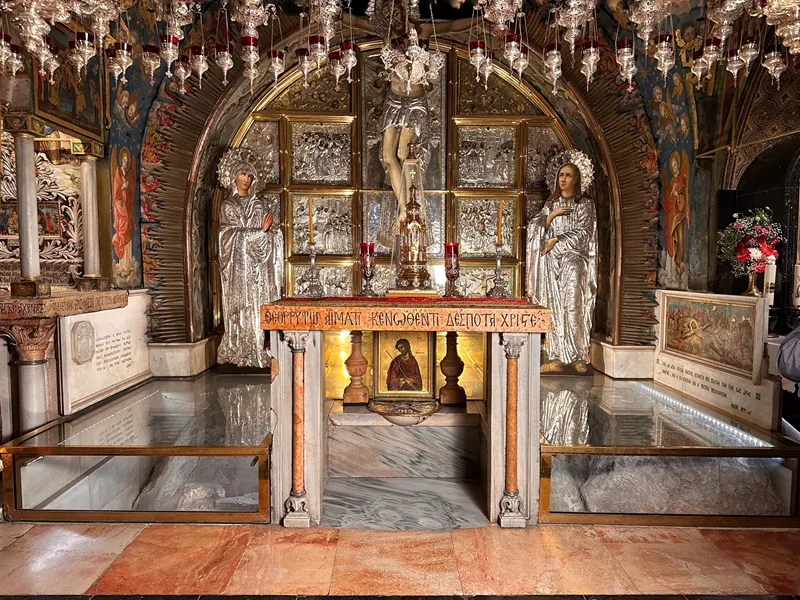 The 11th to 14th stations are inside the Church of the Holy Sepulchre. The Eleventh station is the chapel on the right side of the Golgotha. It marks where Jesus was hammered to the Cross. The Golgotha, the site of Jesus’ crucifixion is the Twelfth station. The altar with a bust of Mary on its right end marks the Thirteenth station, where Mary watched in great agony her son’s death. The Tomb of the Jesus is the Fourteenth station. It marks that site of Jesus’ burial, and resurrection.
The 11th to 14th stations are inside the Church of the Holy Sepulchre. The Eleventh station is the chapel on the right side of the Golgotha. It marks where Jesus was hammered to the Cross. The Golgotha, the site of Jesus’ crucifixion is the Twelfth station. The altar with a bust of Mary on its right end marks the Thirteenth station, where Mary watched in great agony her son’s death. The Tomb of the Jesus is the Fourteenth station. It marks that site of Jesus’ burial, and resurrection.
Touring the Stations of the Cross / Via Dolorosa
 The holy path passes through parts of the Christian and Muslim quarters. Each station is marked by a round metal plate that presents the station’s number in Latin letters. In 2019, small, sculpted images of the events were set next to the metal plates. Some chapels along the holy path are open daily. The Holy Sepulchre is open daily till sunset.
The holy path passes through parts of the Christian and Muslim quarters. Each station is marked by a round metal plate that presents the station’s number in Latin letters. In 2019, small, sculpted images of the events were set next to the metal plates. Some chapels along the holy path are open daily. The Holy Sepulchre is open daily till sunset.
A tour along the Stations of the Cross can integrated into a day tour of Jerusalem.
